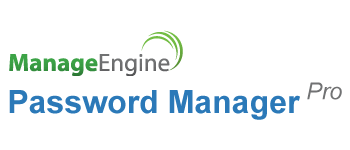Description

WhiteSource

Resolver Incident Management
Comprehensive Overview: WhiteSource vs Resolver Incident Management
WhiteSource and Resolver Incident Management are two distinct software solutions that cater to different aspects of business operations. Here's a comprehensive overview:
WhiteSource
a) Primary Functions and Target Markets:
- Primary Functions: WhiteSource is a Software Composition Analysis (SCA) tool that focuses on open-source security management. It helps organizations automatically detect and remediate vulnerabilities in open-source components, ensuring compliance with licensing requirements. WhiteSource provides features like vulnerability alerts, policy enforcement, and reporting, which help organizations manage the risks associated with open-source software.
- Target Markets: The primary target markets for WhiteSource include software development teams across various industries, particularly those heavily reliant on open-source components, such as technology, financial services, healthcare, and government sectors. It caters to businesses of all sizes, from startups to large enterprises.
b) Market Share and User Base:
- WhiteSource is considered a significant player in the SCA market, competing with other vendors like Snyk, Black Duck (by Synopsys), and Veracode. While exact market share figures might not be publicly available, WhiteSource has a strong reputation and a growing user base due to its comprehensive open-source management features.
c) Key Differentiating Factors:
- WhiteSource differentiates itself with its extensive database of open-source components and vulnerabilities, real-time vulnerability alerts, and integration capabilities with popular development pipelines and CI/CD tools. Its ability to support a wide range of programming languages and ecosystems also sets it apart.
Resolver Incident Management
a) Primary Functions and Target Markets:
- Primary Functions: Resolver Incident Management is a software solution designed to help organizations effectively manage and respond to incidents. It provides tools for logging incidents, assigning tasks, tracking response efforts, and analyzing incident data to improve future responses. The platform aims to streamline communication and coordination during incidents, thereby minimizing impact.
- Target Markets: Resolver primarily targets industries where incident management is critical, such as healthcare, manufacturing, utilities, financial services, and public safety. The solution is suitable for organizations that need robust incident management capabilities to ensure compliance, safety, and operational efficiency.
b) Market Share and User Base:
- Resolver is a recognized name in the governance, risk, and compliance (GRC) software market and is considered a reputable provider of incident management solutions. It competes with other incident management and GRC players like ServiceNow, MetricStream, and RSA Archer. Resolver’s user base includes mid-sized to large enterprises focused on risk and compliance management.
c) Key Differentiating Factors:
- Resolver Incident Management is distinguished by its focus on comprehensive incident response and its integration with broader GRC processes. It offers robust analytics and reporting features, which help organizations not only manage incidents more effectively but also generate insights for future risk mitigation. Its customizable workflows and detailed audit trails are also highlights.
Comparison and Conclusion
WhiteSource and Resolver Incident Management serve different but occasionally overlapping needs within organizations. While WhiteSource focuses on securing open-source software components, Resolver Incident Management is dedicated to managing and responding to operational incidents.
The key differentiating factors lie in their core functionalities, target markets, and integration capabilities. WhiteSource’s strength is in its SCA capabilities and support for software development processes, whereas Resolver excels in operational incident management with a strong emphasis on compliance and risk assessment.
Both have established themselves in their respective markets with considerable user bases, contributing to their roles as essential tools in enterprise risk management and security strategies.
Contact Info

Year founded :
Not Available
Not Available
Not Available
Not Available
Not Available

Year founded :
Not Available
Not Available
Not Available
Not Available
Not Available
Feature Similarity Breakdown: WhiteSource, Resolver Incident Management
WhiteSource (now known as Mend) and Resolver Incident Management serve different primary functions in the enterprise software ecosystem. However, they may share some features, especially in the context of risk and incident management within software development and operational environments.
a) Core Features They Have in Common:
-
Risk Management:
- Both platforms offer risk assessment capabilities, with a strong focus on identifying potential issues before they escalate.
-
Integration Capabilities:
- Both tools integrate with a range of other systems to streamline workflows and improve data visibility across the tech stack.
-
Reporting and Analytics:
- Both products provide detailed reporting and analytics to help organizations derive insights from their data and make informed decisions.
-
Alerting and Notifications:
- They offer automated alerting systems to keep users informed about critical issues and changes in real-time.
b) User Interface Comparison:
-
WhiteSource (Mend):
- WhiteSource primarily focuses on open-source component management. Its interface is typically geared towards developers, with dashboards displaying component vulnerabilities, licensing issues, and compliance statuses.
- The UI tends to be data-centric with visual elements that provide quick insights into vulnerabilities and dependencies within the software projects.
-
Resolver Incident Management:
- Resolver's UI is often more operations-centric, designed to support incident tracking, management, and resolution processes. It offers workflow automation and collaborative features to facilitate effective incident response.
- The interface is structured to support end-to-end incident management, aiming to be intuitive for users who need to identify, manage, and resolve incidents promptly.
c) Unique Features that Set Each Product Apart:
-
WhiteSource (Mend):
- Open Source Vulnerability Database: Mend provides one of the largest vulnerability databases, specifically focused on open-source security, enabling precise vulnerability detection and management.
- License Management: Offers robust features for license compliance, helping organizations manage and track open-source licenses effectively.
- Developer-Focused Tools: Includes tools like automated pull requests for vulnerability fixes directly within development environments.
-
Resolver Incident Management:
- Comprehensive Incident Workflow Management: Resolver offers advanced incident management workflows with capabilities to customize and automate many aspects of incident reporting, escalation, and resolution.
- Collaborative Features: Strong support for collaboration across teams during incident resolution, with features like task assignments, status updates, and communications logs.
- Scenario Planning and Reporting: Includes features for scenario simulations and detailed incident reporting to improve future response strategies.
Each product caters to distinct needs—Mend as a solution for managing open-source usage, dependencies, and vulnerabilities in the software, and Resolver as a comprehensive platform for managing and resolving incidents within an organization.
Features

Open Source Management
Security and Risk Management
Reporting and Analytics
Development Support

Incident Response
Incident Analysis
Incident Documentation
Incident Detection
Best Fit Use Cases: WhiteSource, Resolver Incident Management
WhiteSource and Resolver Incident Management are tools designed for distinct purposes within the software and incident management landscapes. Here's an overview of their best-fit use cases:
WhiteSource
a) For what types of businesses or projects is WhiteSource the best choice?
-
Software Development Companies: WhiteSource is primarily targeted towards organizations that are actively developing software applications and need to ensure compliance and security of their open-source components.
-
Organizations Utilizing Open Source: Any business that integrates open-source components into their products would benefit from WhiteSource, as it automates the detection of security vulnerabilities and license compliance issues.
-
Large Enterprises: Enterprises with extensive software portfolios that require visibility and management of open-source dependencies at scale will find WhiteSource's robust features particularly useful.
-
Regulated Industries: Industries with stringent compliance requirements, such as finance, healthcare, and government, can leverage WhiteSource to ensure that their software components adhere to legal and security standards.
Resolver Incident Management
b) In what scenarios would Resolver Incident Management be the preferred option?
-
Risk and Compliance-driven Organizations: Companies that prioritize risk management, including those in finance, insurance, and manufacturing, can use Resolver to handle incident response effectively.
-
Organizations with Rigorous Incident Management Needs: Businesses that must manage and respond to incidents swiftly and efficiently—such as IT service providers and retail operations—will find Resolver vital for maintaining service continuity.
-
Security-focused Enterprises: Companies needing to track security incidents, manage breaches, and coordinate responses across teams will benefit from the capabilities provided by Resolver's incident management.
-
Multi-location Corporations: Organizations with multiple locations or business units benefit from a centralized incident management approach to ensure consistent response strategies across the board.
d) How do these products cater to different industry verticals or company sizes?
-
WhiteSource: Tailors its solutions to a wide range of industries by focusing on open-source security and compliance, making it versatile enough for both small startups and large corporations. Its ability to integrate seamlessly with existing DevOps and CI/CD pipelines makes it accessible and scalable for organizations of all sizes and technological maturity levels.
-
Resolver Incident Management: Offers flexibility and customization to suit various industries, from finance to healthcare, where robust incident tracking and response mechanisms are crucial. It provides scalable solutions that cater to small businesses with basic needs and large enterprises requiring complex incident management frameworks.
In summary, WhiteSource is best suited for businesses needing comprehensive open-source management, particularly in the software development realm, while Resolver Incident Management excels in scenarios requiring detailed incident tracking and robust risk management, appealing to both security-conscious organizations and those with complex operational landscapes.
Pricing

Pricing Not Available

Pricing Not Available
Metrics History
Metrics History
Comparing undefined across companies
Conclusion & Final Verdict: WhiteSource vs Resolver Incident Management
When considering WhiteSource and Resolver Incident Management, it's essential to evaluate the specific needs and priorities of an organization. Both products offer unique benefits, and the best value depends on these factors.
a) Considering all factors, which product offers the best overall value?
The best overall value depends on the primary objectives of the organization:
-
WhiteSource is ideal for organizations looking for a comprehensive software composition analysis (SCA) tool that focuses on open-source vulnerability management and license compliance. It adds significant value by automating the identification and remediation of security vulnerabilities and managing open-source components efficiently.
-
Resolver Incident Management is suited for companies prioritizing incident management and response. It excels in managing, tracking, and resolving incidents, and is beneficial for organizations needing robust incident response capabilities and risk management processes.
Overall, if security and regulatory compliance with open-source components are the main concern, WhiteSource may offer more value. If the focus is on managing incidents and reducing the lifecycle of incident resolution, Resolver Incident Management might be a better choice.
b) Pros and Cons of Choosing Each Product
WhiteSource:
-
Pros:
- Excellent for open-source vulnerability management.
- Offers detailed software composition analysis.
- Automated alerts and remediation suggestions.
- Strong focus on license compliance.
-
Cons:
- Limited functionality outside software component analysis.
- May require integration with other tools for broader security coverage.
Resolver Incident Management:
-
Pros:
- Comprehensive incident management features.
- Supports efficient tracking and resolution of incidents.
- Integrates risk management strategies.
- Scalable for large organizational needs.
-
Cons:
- Primarily focused on incident and risk management, not software vulnerabilities.
- May require additional tools for comprehensive security management.
c) Recommendations
-
Assess Your Needs:
- Determine whether your organization’s primary concern is managing software vulnerabilities and open-source compliance (favoring WhiteSource) or handling incident resolution and risk management (favoring Resolver).
-
Integration Considerations:
- Consider the existing tech stack in your organization. WhiteSource might require integration with more comprehensive security solutions, while Resolver may need to be paired with a software composition analysis tool if open-source management is also a need.
-
Scale and Customization:
- Evaluate the scalability of the solution according to the organization's size and industry. For highly regulated industries handling a lot of incidents, Resolver's incident management strengths might be more beneficial. For tech firms highly reliant on open-source, WhiteSource's pedigree in vulnerability management would be advantageous.
-
Budget:
- Compare the pricing models relative to the benefits each offers and consider the long-term return on investment, factoring in the potential risks of not addressing either area effectively.
In conclusion, organizations should carefully evaluate their specific needs, existing infrastructure, and priorities in security management or incident response to make an informed decision between WhiteSource and Resolver Incident Management.
Add to compare



